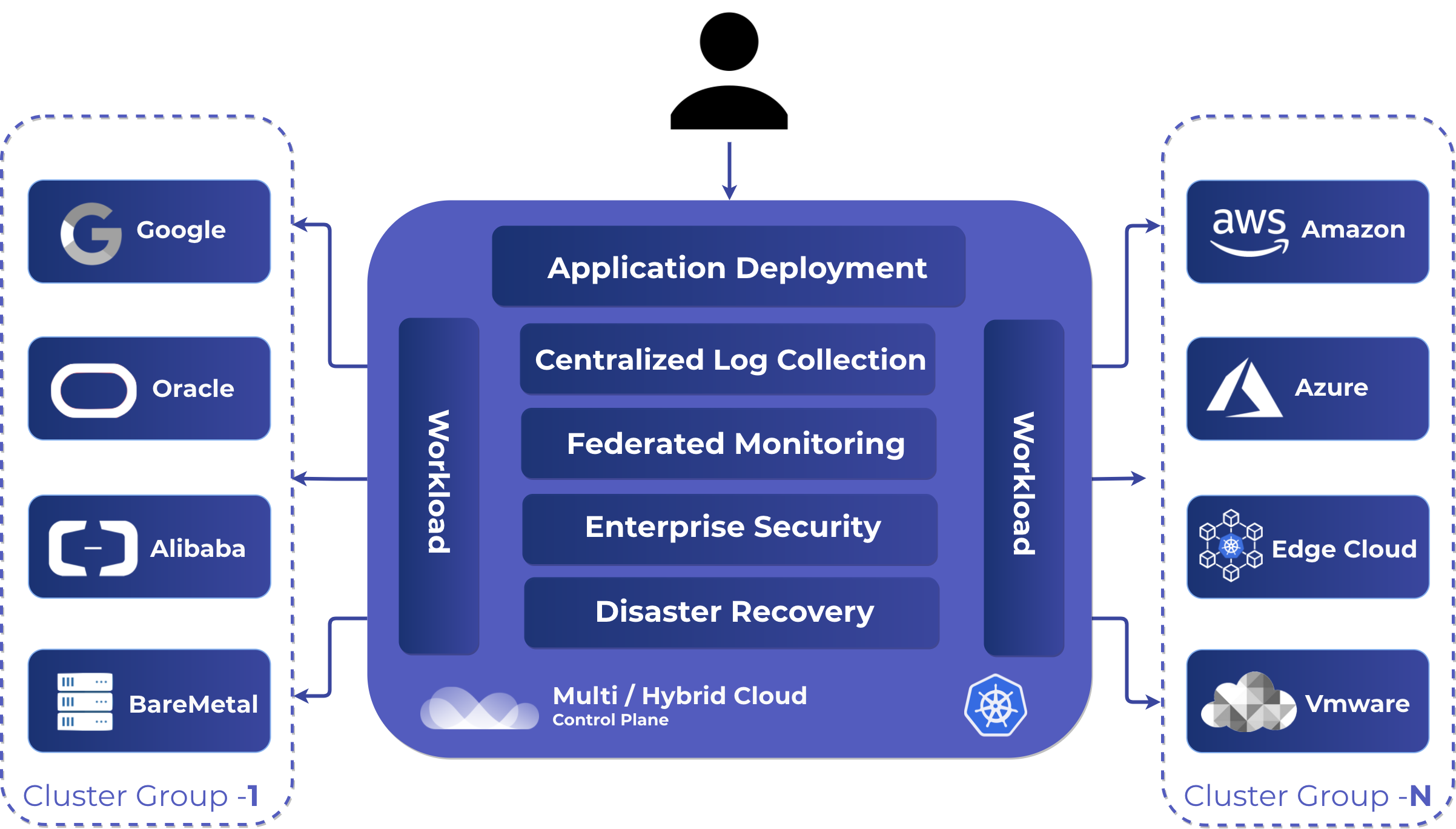Banzai Cloud Pipeline is an enterprise-ready container management platform for cloud, multi-cloud and hybrid-cloud environments. It aims to create a seamless and consistent operational experience across on-premise data centers (bare metal, VMware) and clouds (Amazon, Azure, and Google).

Securely running and operating workloads in single, multi- and hybrid-cloud environments without modifications, and decoupling it from the underlying infrastructure vendors requires a large number of components configured to work in tandem. The Banzai Cloud Pipeline platform build on selected cloud components, such as Kubernetes, and adds a unified system architecture that creates a highly productive, yet flexible environment for developers and operations teams alike.
Banzai Cloud Pipeline is responsible for the whole life cycle of the clusters, and provides the common services that can be used by the integrated services of the clusters running workloads. The components run on a dedicated management cluster. The management cluster includes the following elements.

Pipeline 🔗︎
The main component of the Banzai Cloud Pipeline platform is Pipeline, which serves the main REST API endpoint, for example, for the cluster management features of the system. It has a pipeline-worker component as well, which executes the longer-running tasks dispatched via Cadence.
Pipeline-web 🔗︎
The web user interface of the Pipeline platform, which uses the APIs exposed by Pipeline.
Note: The web interface supports recent releases of the Apple Safari, Google Chrome, Mozilla Firefox browsers. Use the desktop edition.
Cloudinfo 🔗︎
Cloudinfo collects and organizes the offers of popular cloud providers. It maintains an up-to-date and region-aware list of services (compute, network, and so on) from the configured cloud providers and the company-specific data centers. Its configuration makes decisions about which providers and offers are available at the given site. Cloudinfo serves data essential for other components, like the available instance types, regions, endpoints, or the costs associated with the available resources.
Banzai Cloud Enterprise installations can run Cloudinfo locally.
Telescopes 🔗︎
Telescopes is a recommender, it recommends optimal cluster layouts for the user requirements based on the information collected by Cloudinfo. Telescopes takes generic requirements like number of CPUs and amount of memory, and recommends cluster layouts of different cloud providers based on overall price and value.
Banzai Cloud Enterprise installations can run Telescopes locally.
Anchore 🔗︎
The image vulnerability scan service can scan Docker images for vulnerabilities before they are deployed, and prevent the deployment of images containing vulnerabilities. Pipeline uses the Anchore engine for vulnerability scans.
Open source installations use a publicly available Anchore Open Source installation. Banzai Cloud Enterprise installations can run Anchore locally, or use an external Anchore engine, for example, Anchore Enterprise.
Cadence 🔗︎
Cadence is responsible for handling long-running tasks within Pipeline.
Dex authentication 🔗︎
Banzai Cloud Pipeline uses the Dex OpenID Connect gateway (maintained by Banzai Cloud) to authenticate and authorize users connecting to Pipeline or the clusters’ API servers. It supports SAML 2.0.
Database 🔗︎
Pipeline components store all non-reproducible data Pipeline in a relational databases for persistence. The default setup deploys and configures a PostgreSQL instance to the cluster that runs Banzai Cloud Pipeline.
The platform also supports MySQL, as well as other external database services, including, Amazon RDS and Aurora.
Vault secret store 🔗︎
Secrets are used everywhere in Banzai Cloud Pipeline: for interactions with cloud providers, Kubernetes clusters, or for applications deployed to the clusters. The platform uses a central Vault service to securely store and manage secrets.
By default, the Vault service uses the database backend of the platform.












